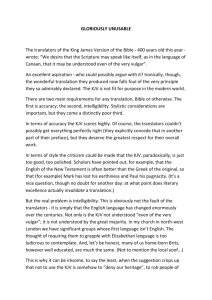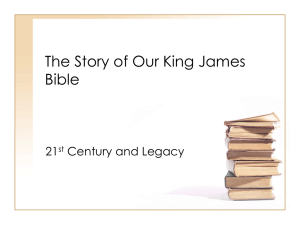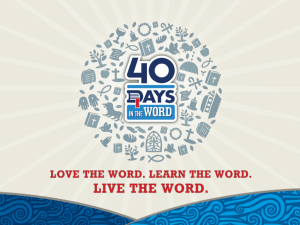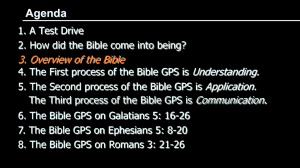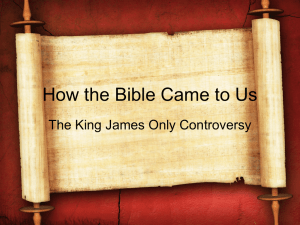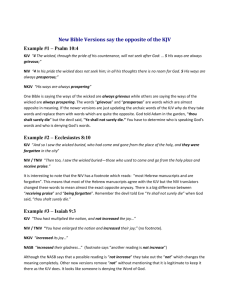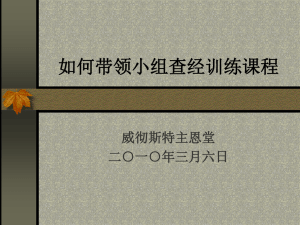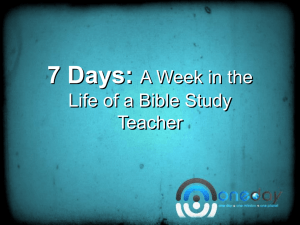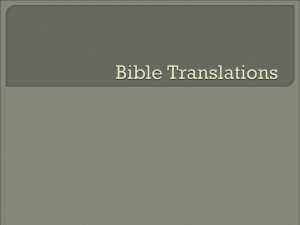King James Bible: 20th Century History & Influence
advertisement
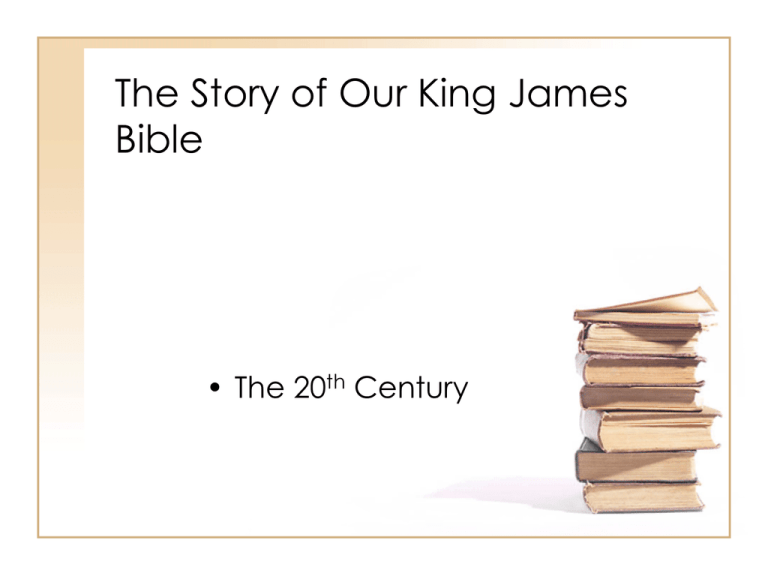
The Story of Our King James Bible • The 20th Century In 1911 the KJV was 300 years old • Oxford University Press published 3 different “anniversary” editions: • A.W. Pollard (the greatest KJV scholar at the time) wrote a book length introduction to a facsimile copy of the 1611 • Pollard was also involved in republishing an 1833 edition, accompanied by his introduction to the KJV • The 3rd edition originated in the USA: The 1911 Tercentenary Commemoration Bible: the Holy Bible Containing the Old and New Testaments Translated out of the original Tongues and with the Former Translations Diligently Compared and Revised by Kings James’s Special Command 1611: The Text Carefully Corrected and Amended 1911 In England and America, there were public celebrations of the KJV • On March 29, 1911, Carnegie Hall was filled by those celebrating “Tercentenary Sunday.” • President Taft wrote a letter: “The publication of this version of the Holy Scriptures in 1611 associates it with the early colonies of the English people upon this continent. It became at one the Bible of our American forefathers. Its classic English has given shape to American literature. It’s spirit has influenced American ideals in life and laws and government.” In 1909 C.I. Scofield published the first version of his study Bible • What is significant about this Bible is that it included theological commentary; not only in the margins, but sometimes as textual headings • This had historically been avoided, because of James’s instructions in 1611 The 20th Century saw not only the continuation, but an increase in the rift between the KJV as a religious book and a work of literature • In 1906 John Hays Gardiner published, The Bible as English Literature. • 3 separate books were published with the title, The Bible as Literature. • In 1931 Charles Allen Dinsmore wrote in his book, The English Bible as Literature that the KJV “was made in the most vital period of our language…is a finer and nobler language than the Scriptures in their original tongues.” Opponents to the “bible as literature” movement included • C.S. Lewis – Lewis was an Englishman who is most famous and respected in America • T.S. Eliot – Eliot was an American living in England • Eliot argued that the Bible was influential on literature BECAUSE it was the word of God By the 1970’s, most of the literary praise for the KJV had ended. As Gordon Campbell writes, “in the world of literary study, the KJV is more honored than read.” After World War 2, there were a flood of new translations • The Roman Catholics produced several new versions (Jerusalem Bible, New American Bible) • The Jehovah’s Witnesses produced their own version of the Bible • The NT of the NIV was published in 1973 • The New English Bible (1961). Popular in England • The New King James was published in 1979 – It uses the Textus Receptus for its NT • The 21st Century King James Bible was published in 1994 – Contains many 17th century words like “thee” and “thou.” – But modernizes other words: “Astonied” in Ezra 9.3 is now “stunned.” • The New Cambridge Paragraph Bible was published in 2005 – It modernizes some spelling, and uses paragraphs
